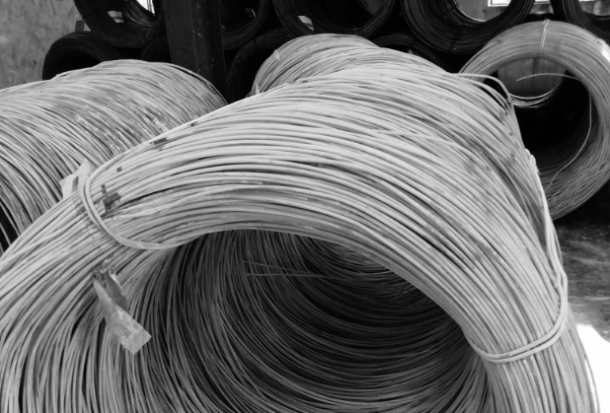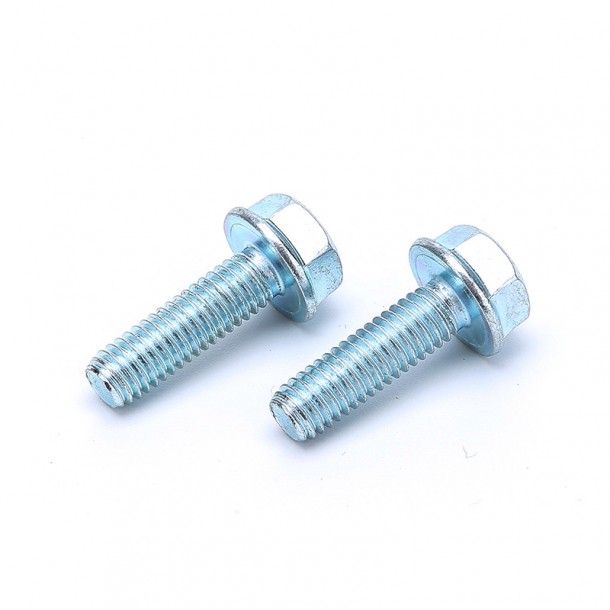High quality raw materials are the basis for producing high quality fasteners. However, many fastener manufacturers’ products will have cracks. Why does this happen?
At present, the common specifications of carbon structural steel wire rods provided by domestic steel mills are φ 5.5- φ 45, the more mature range is φ 6.5- φ 30。 There are many quality accidents caused by phosphorus segregation, such as phosphorus segregation of small wire rod and bar. The influence of phosphorus segregation and the analysis of crack formation are introduced below for reference. The addition of phosphorus in the iron carbon phase diagram will correspondingly close the austenite phase region and inevitably increase the distance between the solidus and liquidus. When phosphorus containing steel is cooled from liquid to solid, it needs to go through a large temperature range.

The diffusion rate of phosphorus in steel is slow, and the molten iron with high phosphorus concentration (low melting point) is full of the first solidified dendrites, which leads to phosphorus segregation. For the products that often have cracks during cold forging or cold extrusion, the metallographic examination and analysis show that the ferrite and pearlite are distributed in strips, and there is white banded ferrite in the matrix. There are intermittent light gray sulfide inclusion zones on the banded ferrite matrix. The banded structure of sulfide is called “ghost line” because of sulfide segregation.
The reason is that the area with serious phosphorus segregation presents white bright zone in the phosphorus enrichment area. In the continuous casting slab, due to the high phosphorus content in the white area, the columnar crystals rich in phosphorus concentrate, reducing the phosphorus content. When the billet solidifies, the austenite dendrites are first separated from the molten steel. The phosphorus and sulfur in these dendrites are reduced, but the finally solidified molten steel contains phosphorus and sulfur elements. It solidifies between the dendrite axes because the phosphorus and sulfur elements are high. At this time, sulfide is formed, and phosphorus is dissolved in the matrix. Because the phosphorus and sulfur elements are high, sulfide is formed here, and phosphorus is dissolved in the matrix. Therefore, Due to the high content of phosphorus and sulfur elements, the carbon content in phosphorus solid solution is high. On both sides of the carbonaceous belt, that is, on both sides of the phosphorus enrichment area, a long and narrow intermittent pearlite belt parallel to the ferrite white belt is formed, and adjacent normal tissues are separated. Under the heating pressure, the billet will extend to the processing direction between the shafts, because the ferrite belt contains high phosphorus, that is, phosphorus segregation will lead to the formation of a heavy wide bright ferrite belt structure with a wide bright ferrite belt structure. It can be seen that there are also light gray sulphide strips in the wide bright ferrite belt, which is distributed with a long strip of sulfide rich phosphorus ferrite belt, which we usually call “ghost line”. (See Figure 1-2)
In the hot rolling process, as long as there is phosphorus segregation, it is impossible to obtain a uniform microstructure. More importantly, because phosphorus segregation has formed a “ghost line” structure, it will inevitably reduce the mechanical properties of the material. Phosphorus segregation in carbon bonded steel is common, but its degree is different. Severe phosphorus segregation (“ghost line” structure) will cause extremely adverse effects on steel. Obviously, the severe segregation of phosphorus is the culprit of cold heading cracking. Because the phosphorus content in different grains of steel is different, the materials have different strengths and hardness. On the other hand, it makes the material produce internal stress, which will make the material easy to crack. In materials with “ghost line” structure, it is precisely because of the decrease of hardness, strength, elongation after fracture and reduction of area, especially the decrease of impact toughness, that the phosphorus content in materials has a great relationship with the structure and properties of steel.
In the “ghost line” tissue in the middle of the field of vision, a large amount of thin, light gray sulfide was detected by metallography. The non-metallic inclusions in structural steel mainly exist in the form of oxides and sulfides. According to GB/T10561-2005 Standard Classification Diagram for the Content of Non metallic Inclusions in Steel, the sulfide content of Class B inclusions is 2.5 or above. Nonmetallic inclusions are a potential crack source. Its existence will seriously damage the continuity and compactness of the steel structure, thus greatly reducing the intergranular strength.
It is speculated that the sulfide in the internal structure “ghost line” of steel is the most easily cracked part. Therefore, a large number of fasteners cracked in cold heading and heat treatment quenching at the production site, which were caused by a large number of light gray long sulfides. This nonwoven fabric destroyed the continuity of metal properties and increased the risk of heat treatment. “Ghost line” cannot be removed by normalizing and other methods, and impurity elements shall be strictly controlled before smelting or raw materials entering the plant. According to composition and deformability, non-metallic inclusions are divided into alumina (type A) silicate (type C) and spherical oxide (type D). Its appearance will cut off the continuity of the metal and become pits or cracks after peeling, which is easy to form cracks during cold heading and cause stress concentration during heat treatment, thus causing quenching cracks. Therefore, non-metallic inclusions should be strictly controlled. The current Structural Carbon Structural Steels GB/T700-2006 and GB T699-2016 High Quality Carbon Steels put forward requirements for non-metallic inclusions. For important parts, it is generally A, B, C type coarse series, fine series is not more than 1.5, D, Ds type coarse system and level 2 are not more than level 2.
Hebei Chengyi Engineering Materials Co., Ltd. is a company with 21 years of fastener production and sales experience. Our fasteners use high-quality raw materials, advanced production and manufacturing technology, and perfect management system to ensure product quality. If you are interested in purchasing fasteners, please contact us.
Post time: Oct-28-2022

